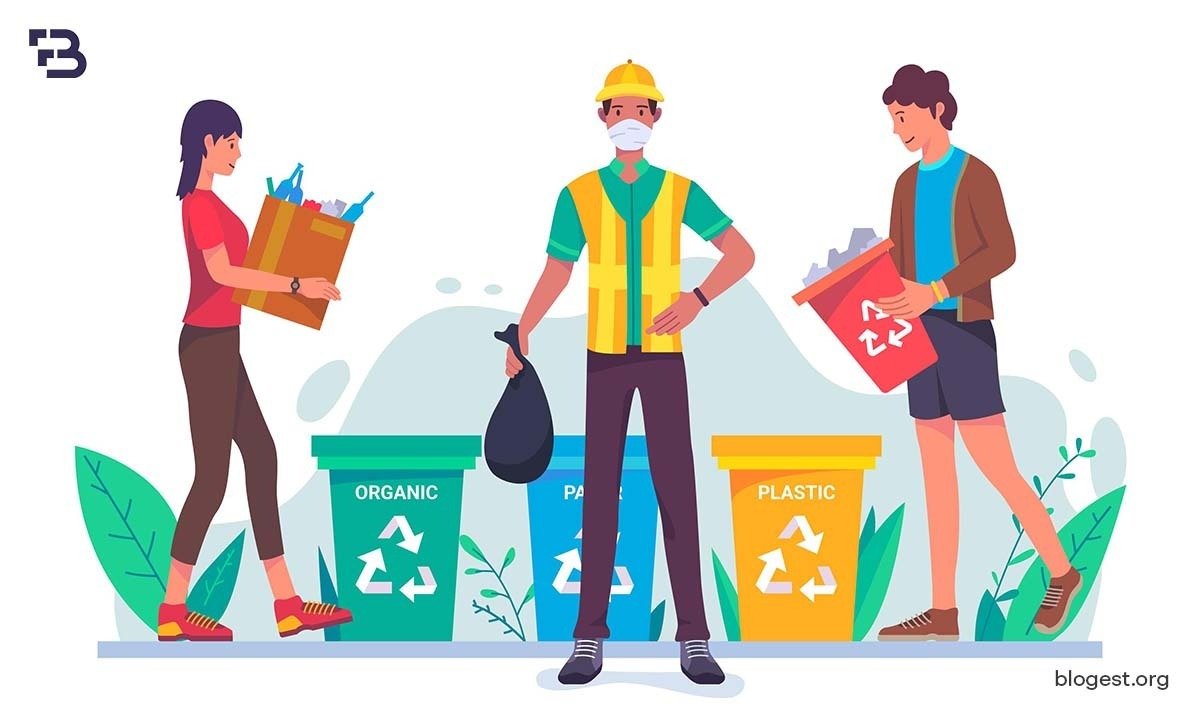There is an estimated one-fifth of construction waste that is generated. The materials used for construction, materials generated during demolitions and packaging wastes as well as leftovers are some of the major factors which could be attributed to the problem of construction waste.
Unceasingly generating construction waste has adverse effects of deterioration on the environment and population health. As a result, construction enterprises carry responsibility towards the environment and have to introduce waste management practices to reduce its consequences.
It is outlined here the main principles that can save the planet and lead construction waste management toward a sustainable approach. Therefore, prepare your contractor trash bags and read on!
What Is Construction Waste?
Construction waste is a comprehensive term that covers various parts and pieces which are left during the construction of a building, renovation, or if it is wisely demolished.
These comprise bricks, woods, fillers, metals, plastics, glasses, packaging materials electrical wirings/fittings, insulation, etc.
Due to building and demolition processes worldwide, the construction industry estimates the annual waste production to be more than 500 million tons annually with more than 200 million tons in the U.S. alone.
Negative Impacts of Construction Waste
Poor management of construction garbage exacerbates environmental issues serious environmental and human health problems. Some of these impacts include:
- Air and water pollution from discarded materials
- The lands get polluted with dangerous chemicals that find their way into living organisms.
- Carbon dioxide emissions are emitted to produce new goods (instead of lost ones).
- Increased load on landfills and limited disposal space.
- Aesthetic issues in local communities due to improper waste disposal practices.
Best Practices For Construction Waste Management

Below are some best practices that construction companies can adopt to manage their waste and reduce their environmental impact effectively:
Reduce
An excellent way to deal with the issue of waste accumulation at construction sites is to reduce the volume of waste generated in its sources.
This goal may sound unrealistic but it can actually be achieved! This can come true by way of fastidious planning and use of precise computations and materials that adhere to the methods of zero-waste, maximum utilization and minimizing excess and waste.
Adopting ethical building approaches, such as modular construction, which includes a number of prefabricated components that are typically assembled on location, can surely help to control the volume of waste production.
Lastly, one can build into waste reduction efforts by always using durable, reusable or recyclable materials.
Instead of conventional methods, construction companies who strive for sustainable development can save on costs by diverting low volumes of reusable materials and minimizing the waste that needs to be disposed of or recycled.
Reuse
Apart from recycling those substances is also another helpful approach to managing construction waste, which reduces the impact on the environment.
Through the action of salvaging and using again materials, companies can pull down the demand for new resources. Additionally, they can reduce the energy consumption due to the process of manufacturing, as well as the one that is linked to the transportation of them.
Besides the traditional strategy of conserving natural resources, earlier versions also contributed to their longevity.
The array of construction materials that can be reused can be from primary beams to old bricks as well as small items that decorate doors and fixtures. In most cases, they will be used as they are or as a minimum modification.
A systematic process for sorting and storing reusable products before recycling is a very significant activity that encourages recycling practices to be successful.
The construction companies can act in collaboration with the reuse centers that are specialized to remove materials that are not needed for some other projects and offer them for use in other project places.
In addition to saving space in landfills but this creates room for cost-cuttings as well as a window to project a positive picture for the company.
It is a shift in the thinking towards regarding materials not as items to be dumped after their single use, but instead as lifesavers that they can deliver continuous value.
Recycle
Recycling is the third pivotal strategy in managing construction waste effectively. It involves processing discarded materials to create new products.
One of the regularly recycled products from construction sites is mainly the mentioned materials including concrete, metals, wood, and glass.
For instance, crushed concrete can serve as an aggregate for new concrete or road constructions or as a base layer for paths and roads, while the metal saved in collection reuses may be recycled metal components in structures again.
The step meets with resource savings and lower carbon pressure from manufacturing processes which promotes the environmental sustainability much more.
Separate waste recycling can be greatly improved by construction companies offloading garbage at the source, where it can be sorted off so as to group together recyclable substances and non-recyclable garbage.
This can be easily accomplished by implementing the material collection points and instructing the employees to do the segregation of waste stream in the accurate manner it should be done.
Another important thing will be working with community recycling facilities that will handle the collected reprocessed products.
The collaborations with these factories will guarantee that practically all reprocessed materials commercialized by companies are consumed accordingly within their industries or in use by others.
Consequently, this method increases the viability of this industry and supports the circle-of-goods model in which waste is minimized through repeated uses of materials.
How To Implement a Construction Waste Management Strategy?
After reading this article, you know what the best approaches for recycling construction waste are. You can follow up by discovering the principles of the waste management system that you may introduce at your construction site.
Perform Waste Audit at Least Once a Year
The initial step toward the success of waste management is called a waste audit which should be done at least annually. It involves an audit of types and quantities of construction site waste, inventorying areas for enhancements and setting goals of waste minimize production.
Set SMART Goals
The waste audit should go by step, and then you have to set SMART goals as specific, measurable, achievable, relevant, and time-bound for waste reduction following that.
While a specific example mentioned here is recycling of 80% of construction waste on your site in the next six months, others can include reducing the use of fossil fuels by 50% or installing a solar panel system.
Establishing SMART objectives is a measure to track movement towards the set goal and inspire workers.
Educate Your Workforce
The first step towards attaining an effective waste management avenue is by educating and creating awareness of waste segregation, disposal and recycling of both your employees and subcontractors.
This information session has been considered for integration into safety training or routine task orientations called Toolbox Talk.
Ensure the Waste Disposal Procedures Are Clear
However, clear rules on waste handling should be defined to ensure that everybody understands that the rising amount of waste at the site should be taken care of.
This means that it is mandatorily allotted some classified areas for dividing the waste, separately labelling the bins for various types of waste, and ensuring that waste is taken out regularly.
Be Responsible; Have a Thorough Waste Management Plan
Successful garbage management at a construction site begins with appropriate planning. The action plan targets waste management starting from different types and ending up with hazardous ones which might require contingency plans including emergency situations.
Final Thoughts
The handling of construction waste will be taken into consideration as well. It has to be done to have sustainable and environment-friendly buildings.
By incorporating these actions, you can effectively decrease waste produced on the construction sites, improve the environment’s well-being and benefit the present and meeting generations alike.
Keep in mind that the more waste is managed responsibly the bigger and more noticeable the difference will be. This Earth Day please join us in creating a cleaner and greener world by recycling, reusing, and eliminating waste.




